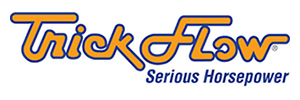Hot rodders and gear heads are the true definition of control freaks. In the early years of performance and racing, the focus was entirely on making horsepower. But now making power is much easier. Now the goal is as much about controlling the engine both from how much fuel and spark each cylinder needs along with accurately monitoring every nuance. This can’t be done by analog means with manual gauges and maybe a movie camera like our grandfathers did it. That’s just too cumbersome. Today it takes computer power.
We’ll take a look at the three levels of Holley engine computers and how these systems build on a basic high performance foundation to offer three optional tiers to choose from. We’ll approach this like building a house. First we have to have a simple yet solid foundation that supports the addition of multiple floors, if you will, of engine control. We will begin with the Terminator X, add features and control with the HP, and finally hit the penthouse suite with Holley Dominator ECU.
To set the stage, the Dominator was actually the first ECU that Holley created that offered incredible power and performance capabilities. Once that flourished, the engineers found they could offer simpler systems for applications that did not require nearly as much complexity and these systems could be offered at a reduced price. But the point that must be emphasized is that even the least expensive Terminator X employs a feature-rich software and identical computing power to the Dominator. Even the basic electrical harnesses are the same between all three ECU’s…with some differences, of course.
The simplest of the Terminator X systems is designed to offer EFI control over various engine platforms such as old school engines like the small- and big-block Chevy, small-block Ford, as well as the more modern GM LS, Chrysler Gen III Hemi, and the Ford Mod motors. The Terminator X is designed to control both fuel and spark as well as offering control for optional systems like nitrous.
In keeping with its affordable approach, The Terminator series is designed to manage only high impedance injectors. This helps keep the price of the system affordable by not requiring more robust, high amperage injector drivers. This less complex design also limits the total number of what are called Inputs and Outputs (I/O). Inputs refer to the number of channels of additional data the system can track such as fuel pressure, transmission temperature, or other useful data. Outputs would be such items as electric fans, nitrous solenoids, a shift light, or any number of other systems. The importance of these I/O’s will become apparent when we get to the HP and Dominator series where racers can use these for more sophisticated control strategies.
The Terminator X is the base unit for this series and is augmented with the Terminator X Max. The Max versions offer additional control over electronic transmissions as well as electronic drive-by-wire (DBW) throttle bodies. A specific application would be a Terminator X Max designed specifically for a Gen IV 6.0L LS engine with a 58x crank signal, DBW, and a 4L60E electronic transmission.
The Terminator X series was intended as an entry level EFI system that does not require a laptop to install or tune. Instead, the Terminator X comes with a separate handheld display that makes the installation and tuning very easy with a few screen touches. This makes it easier for enthusiasts who may be intimidated by complex laptop software maneuvering required by more sophisticated systems like the HP or Dominator. However, the Terminator X also does offer the ability to go into more detailed software changes with a laptop if desired.
One interesting note about the Terminator X that is different from most other entry level ECU’s is that it contains its own internal manifold absolute pressure (MAP) sensor to reduce the confusion that can often occur with using a separate, external MAP sensor. The Terminator X sensor is a one bar device intended for normally aspirated engines. It can be quickly adapted to supercharger or turbocharger applications by using the supplied harness connection to allow the use of an external MAP sensor. The internal sensor just makes the setup procedure easier. The more sophisticated HP and Dominator ECU’s require an external MAP sensor that must be specifically identified in order to work properly with the software.
All this should reveal that the Terminator X and Max are much more than bare bones EFI systems. The Terminator X also offers nitrous control that includes progressive control over the solenoids. But if turbocharging is more your fare, there’s also electronic control for boost available that can be managed using time, rpm, gear, or speed parameters. Terminator X does not offer internal data logging but data logging is retrievable on a separate SD card located in the hand-held. Plus, as we will see with both HP and Dominator, the Terminator X offers advanced individual configuration file (ICF) work.
In addition to these amenities, Terminator allows the optional use of a knock sensor circuit to protect valuable engine parts like pistons and head gaskets from failure due to the harmful effects of detonation. This can be found in the tool bar under the ICF logo which stands for Individual Configuration File.
Holley has also recently released a separate Terminator X Max kit specifically designed to control the Gen V direct-injected engines such as the L-83 5.3L and L-86 6.0L truck engines and of course the LT1. This system requires heavy-duty electronic drivers to trigger the high amperage loads of the high pressure fuel injectors so the Terminator X Max box is supplemented with a separate box housing the required injector drivers.
This Gen V Max system offers tuning tables for variable valve timing (VVT) that is present on all Gen V engines. Control tables are already loaded in the software to make it easier to set up the engine quickly and start making horsepower.



















































